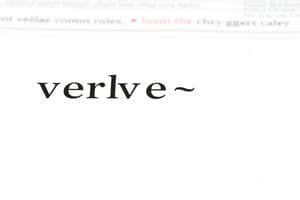Podcast
Questions and Answers
What is the feminine form of the adjective 'lento'?
What is the feminine form of the adjective 'lento'?
lenta
Transform the adjective 'feliz' into an adverb.
Transform the adjective 'feliz' into an adverb.
felizmente
How do you form an adverb from the adjective 'inteligente'?
How do you form an adverb from the adjective 'inteligente'?
inteligentemente
Given the adjective 'tranquilo', what is the corresponding adverb?
Given the adjective 'tranquilo', what is the corresponding adverb?
What are the steps to form an adverb from 'brillante'?
What are the steps to form an adverb from 'brillante'?
Flashcards are hidden until you start studying
Study Notes
Forming Adverbs in Spanish
- Adverbs in Spanish can often be formed from adjectives.
- To create an adverb, identify the base adjective. For example, "rápido" (quick).
- Convert the adjective to its feminine form by adding 'a': "rápida."
- Append "mente" to the feminine form to form the adverb: "rápidamente" (quickly).
Examples of Adverb Formation
- Adjective "generoso" (generous) changes to feminine "generosa," and becomes "generosamente" (generously).
- Adjective "desafortunado" (unfortunate) converts to feminine "desafortunada," resulting in "desafortunadamente" (unfortunately).
Studying That Suits You
Use AI to generate personalized quizzes and flashcards to suit your learning preferences.




